 We can concur with many years of research that obesity can increase the risk of immune dysfunction. This is a multifaceted phenomenon often associated with factors such as physical inactivity, poor nutritional profiles, increased adiposity (fat tissue), and metabolic disorders/diseases. Commonly, the latter can gradually progress from the aforementioned factors.
We can concur with many years of research that obesity can increase the risk of immune dysfunction. This is a multifaceted phenomenon often associated with factors such as physical inactivity, poor nutritional profiles, increased adiposity (fat tissue), and metabolic disorders/diseases. Commonly, the latter can gradually progress from the aforementioned factors.
What we have also seen in recent years during the COVID pandemic is how important it is to address the risks to public health and mortality caused by poor health status and possible exposure to infectious diseases. The solution to shelter in place (reducing transmissions) was a band-aid to the very real problem that our culture is not perfect, and we have many individuals at risk due to unhealthy lifestyles. To improve public health on a broader scale, we need to make interventions at the community and individual levels.
Immediate Lifestyle Changes for Better Immune Health
- Increase Sunlight Exposure One immediate lifestyle change at-risk individuals can make to improve their immune health is to increase their exposure to sunlight. Sunlight exposure triggers Vitamin D synthesis via UV light and 7-dehydrocholesterol. This essential vitamin plays a critical role in respiratory immune response, including both inflammation and acute damage responses.
- Boost Physical Activity Another crucial intervention is increasing physical activity. This has a two-fold benefit: improving body composition and metabolic health, and potentially increasing Vitamin D levels (even without sunlight). This is because Vitamin D is stored in adipose tissue and can be released through the metabolism of fat cells.
Moving forward, we can improve the health of our community by helping each other enhance diets, increase physical activity, get outside in the sun, and maintain hygiene for others.
NIFS: Supporting Your Health Journey
Here at NIFS, we encourage members to participate in our outdoor classes, such as boot camp and Tabata. We also offer nutritional services and unconditional support for improving nutrient content and sustainability in dietary practices.
If you feel you may need a body composition assessment, we offer BodPod and NIFS3D scans that can provide more information on your health, including risk factors such as BMI, body fat percentage, waist circumference, and total energy expenditure. Our staff can educate you on what your readings mean, how they are relevant to you, and what strategies could improve your overall health and fitness in the long term.
We also maintain the utmost cleanliness on each machine and encourage our members to be diligent about cleaning machines after usage.
Please reach out and utilize the many free and additional services we offer to aid in your health journey. We are excited to have a great community, and we look forward to you being a part of it. Get outside and join us for some excellent fitness and health services!


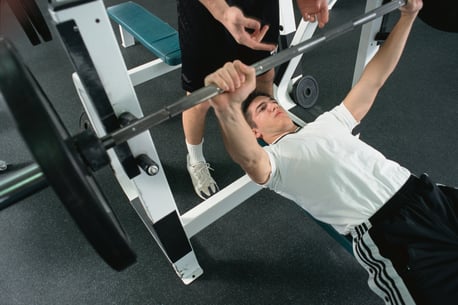 Let me ask you a question. Have you ever hit a plateau in the weight room when it comes to increasing strength? What about when it comes to increasing power output (vertical jump, short distance sprint)? Well if you have, you are not alone. I know I have hit plateaus in the past and it can definitely be frustrating when you are not able to get past it.
Let me ask you a question. Have you ever hit a plateau in the weight room when it comes to increasing strength? What about when it comes to increasing power output (vertical jump, short distance sprint)? Well if you have, you are not alone. I know I have hit plateaus in the past and it can definitely be frustrating when you are not able to get past it.
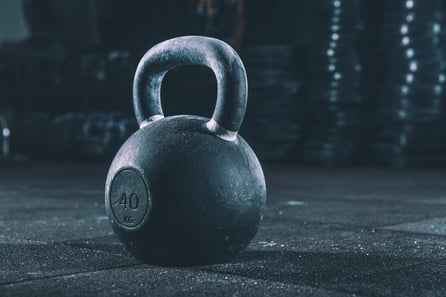 The Russian kettlebell is unique among exercise tools. It is an offset-handle weight that travels easily between the legs in a pendulum movement that can be easily seen in the kettlebell swing (two-hand and one-hand swings). If done correctly, the hips hinge straight backward as if you were trying to push a swinging door open while holding a tray. If you squat, even a little bit, there is little rearward movement and the door doesn’t open. Hip power is lost.
The Russian kettlebell is unique among exercise tools. It is an offset-handle weight that travels easily between the legs in a pendulum movement that can be easily seen in the kettlebell swing (two-hand and one-hand swings). If done correctly, the hips hinge straight backward as if you were trying to push a swinging door open while holding a tray. If you squat, even a little bit, there is little rearward movement and the door doesn’t open. Hip power is lost. 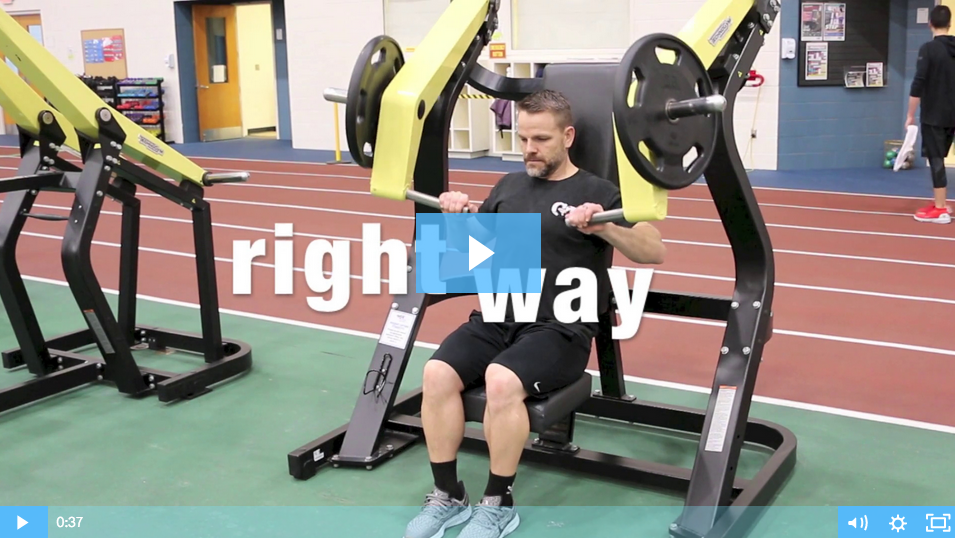
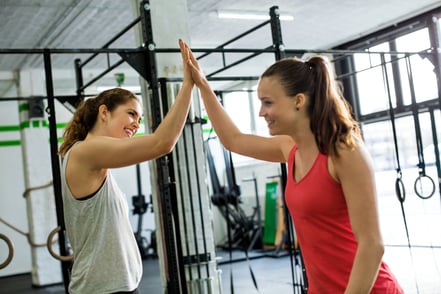 As fitness professionals, we promote good habits to our clients and encourage people to make positive changes in their lives. Sometimes we help others find the spark to exercise or offer the accountability to make those hard-earned results stick. Overall, “helping individuals achieve success in goals and happiness in life” sums up what it means to be a trainer.
As fitness professionals, we promote good habits to our clients and encourage people to make positive changes in their lives. Sometimes we help others find the spark to exercise or offer the accountability to make those hard-earned results stick. Overall, “helping individuals achieve success in goals and happiness in life” sums up what it means to be a trainer.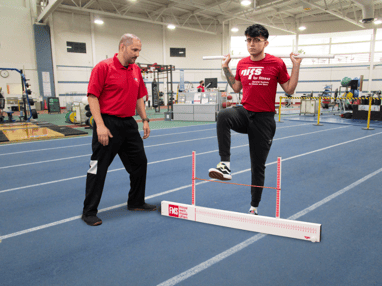
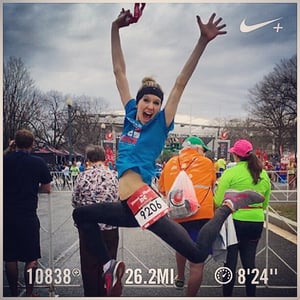
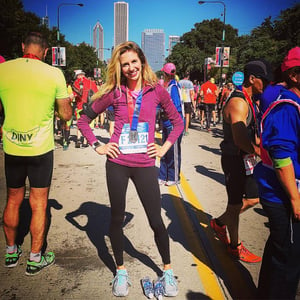 In 2014, I moved to NYC where I was going to pursue my passion for fitness in the fitness capital of the world. I was surrounded by some of the top fitness professionals and eager to learn more and more every day. In addition to this new lifestyle also came new stress. I turned to running again, and in one of the best parks you can run in, NYC’s Central Park. Weekends were filled with seeing long-distance endurance athletes racing. Novembers were filled with spectating one of the biggest marathons in the U.S. right outside my Upper East Side apartment: the New York City Marathon. I was inspired! In addition to my running solo, I also began taking classes at Barry’s Bootcamp from top trainers, including Nike Trainer
In 2014, I moved to NYC where I was going to pursue my passion for fitness in the fitness capital of the world. I was surrounded by some of the top fitness professionals and eager to learn more and more every day. In addition to this new lifestyle also came new stress. I turned to running again, and in one of the best parks you can run in, NYC’s Central Park. Weekends were filled with seeing long-distance endurance athletes racing. Novembers were filled with spectating one of the biggest marathons in the U.S. right outside my Upper East Side apartment: the New York City Marathon. I was inspired! In addition to my running solo, I also began taking classes at Barry’s Bootcamp from top trainers, including Nike Trainer 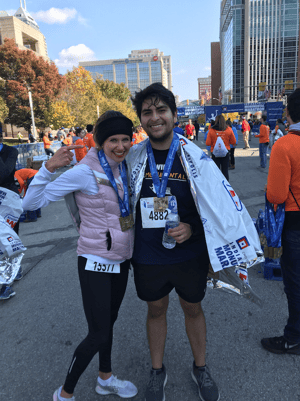 On August 15, 2018, I took on the role of coach for the
On August 15, 2018, I took on the role of coach for the  Interested in training for the Mini? NIFS Mini Marathon & 5K training program registration is now open!
Interested in training for the Mini? NIFS Mini Marathon & 5K training program registration is now open!
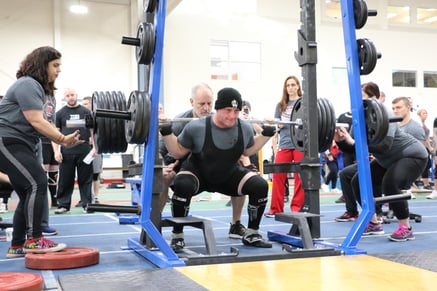 Almost five years ago, the team and I hosted the first ever powerlifting event here at NIFS. Also known as the Iron Triathlon (shirt slogan spoiler alert), the first year was a modest one with 25 athletes competing. This year, the competition registration sold out in just under three days! From our humble beginnings to this year’s event, it’s been a ride. There has been so much hard work, resulting in so many smiles and victories for both the athletes and the crew. We have learned a lot from year one to now, and we have developed from our challenges and gotten better each year.
Almost five years ago, the team and I hosted the first ever powerlifting event here at NIFS. Also known as the Iron Triathlon (shirt slogan spoiler alert), the first year was a modest one with 25 athletes competing. This year, the competition registration sold out in just under three days! From our humble beginnings to this year’s event, it’s been a ride. There has been so much hard work, resulting in so many smiles and victories for both the athletes and the crew. We have learned a lot from year one to now, and we have developed from our challenges and gotten better each year.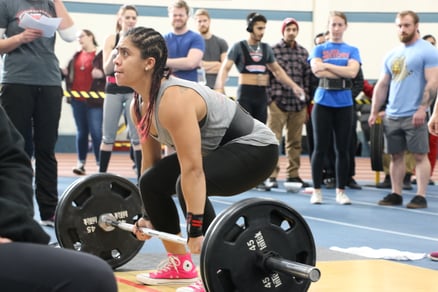 One thing we hear a lot is how inclusive and supportive the environment is on event day. Even though athletes arrive to be victorious over one another, they all support and cheer on each other to do their best. I think the sport of powerlifting is just this way, but I also think the NIFS event intensifies the comradery among these athletes. It sounds corny, but there is something in the air that day, something that reinforces that it’s “WE” and not just “I.”
One thing we hear a lot is how inclusive and supportive the environment is on event day. Even though athletes arrive to be victorious over one another, they all support and cheer on each other to do their best. I think the sport of powerlifting is just this way, but I also think the NIFS event intensifies the comradery among these athletes. It sounds corny, but there is something in the air that day, something that reinforces that it’s “WE” and not just “I.”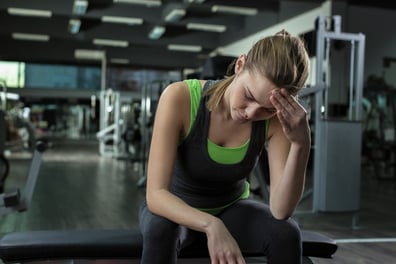 Have you ever woken up feeling like a truck ran you over? This might be due to an underlying illness; whether it be a cold, flu, bronchitis, or some other bug, it seems to happen to everyone at least once per year. When it comes to fitness, we sometimes have to make a choice: “Should I work out or should I rest?” The answer to this is not as cut and dried as it might seem. We’ll look at when it’s a good idea to stay home and chill and when you can just “sweat it out.”
Have you ever woken up feeling like a truck ran you over? This might be due to an underlying illness; whether it be a cold, flu, bronchitis, or some other bug, it seems to happen to everyone at least once per year. When it comes to fitness, we sometimes have to make a choice: “Should I work out or should I rest?” The answer to this is not as cut and dried as it might seem. We’ll look at when it’s a good idea to stay home and chill and when you can just “sweat it out.”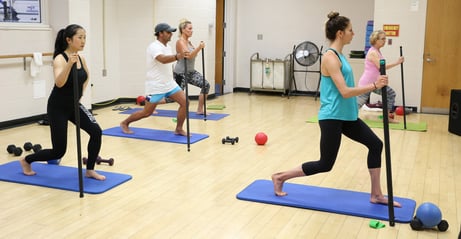 Change is scary. Getting in a comfort zone, routine, or pattern is easy.
Change is scary. Getting in a comfort zone, routine, or pattern is easy.